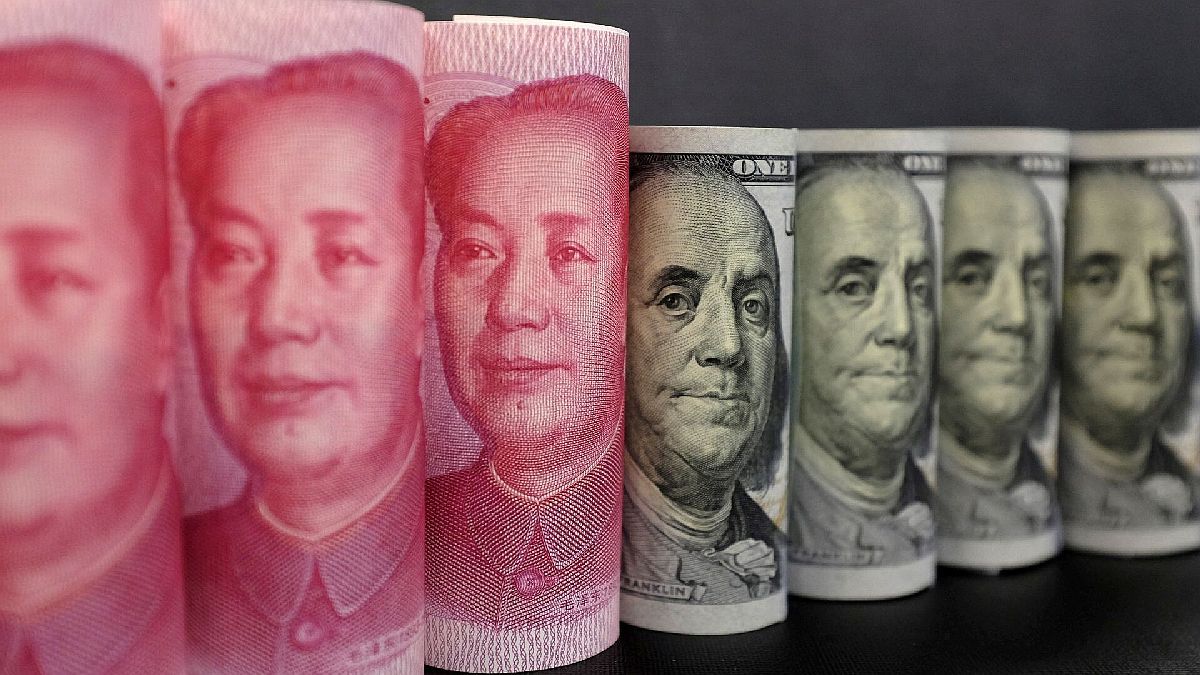In recent days, the peso lost all the competitiveness it had achieved after the December devaluation jump, with three of Argentina’s main trading partners, and he anticipates that the fuel that Javier Milei had achieved as soon as he arrived at the Casa Rosada will soon run out.
Argentine products are becoming expensive again to export to China and Chile and, in turn, products manufactured in those markets are becoming cheap again to enter this domestic market.. Above all, from the point of view of local SMEs, the problem is China. There’s a third partner with which the exchange rate fell behind a month ago, Japan.
The data comes from the Index of Multilateral Real Exchange Rate (TCRM) which is prepared daily by Central bank. It is built from the price of the products that the country trades with the 12 main destination markets and which in turn are suppliers.
When the devaluation jump the TCRM went from 74.5 points, on December 12, to 161.3 points, the next day . And from that moment on, inflation was rapidly eroding competitive gains. On February 26, it stood at 109.5 points, which implies that it lost 32.1% of competitiveness.
The government still has some margin before reaching zero. What is certain is that the rate of wear that existed at the beginning has now been reduced as inflation has also been decreasing, while The Central Bank continued to devalue at a rate of 2% monthly.
The exchange competitiveness with China and Chile finished evaporating on February 23, while with Japan it was lost on January 21. The situation with the main trading partner in Mercosur, Brazil, is also closing rapidly. It is at 111.2 points, while the United States, another of Argentina’s main partners, is at 121.6 points.
If current conditions continue, it is likely that the TCRM it finishes adjusting to 100 points, which is the exact point at which the value of the official dollar is in balance for selling and importingin the next two weeks.
Market analysts suggest that the Minister of Economy, Luis Caputo, and the president of the Central Bank, Santiago Bausili, they are going to try to let an appreciation of the peso continue, betting on a greater drop in inflation, to single digits, and having a greater amount of international reserves.
The expectations of a devaluation or acceleration of the pace of crawling peg (daily mini devaluations) of the market passed from March for April or May now, playing that for that month dollars from the harvest will begin to appear.
Although for financial markets and general expectations what counts now are free dollars, more than anything Cash with Settlement (CCL)If the TCRM lags far behind in relation to the official dollar, which is what the BCRA pays to exporters, it will discourage liquidation.
For some analysts, If the government does not want to accelerate the crawling peg to avoid a rise in inflation, the alternative may be to modify the dollar blend from 80% to the official one and 20% to the CCL and return it to “fernet” dollar, 70/30.
But others consider that It would not help the Central Bank to add more dollars, because a greater proportion of exports would be settled outside the Single and Free Exchange Market. So The alternative could be a fiscal devaluation Therefore, it cannot be ruled out that the rate of the COUNTRY Tax will increase and in turn the withholdings will drop a couple of points. This second option could improve the profitability of cereal companies without having to affect the exchange rate.
Dollar: the view of economists
For example, the consultant Salvador Di Stefano warned that “the dollars from the countryside are not going to be in the expected magnitude because wheat, corn and soybeans fell considerably from June 2022 to date.”
“The drop in soybeans would be around 45%, while in wheat and corn it exceeds 50%. This leaves the producer of a field with few possibilities of profitability, in a context of high withholdings, differential exchange rates for exports and imports, bad weather, high rents and rampant inflation. Even oil drops more than 30%,” he points out.
Nevertheless, Di Stefano assures that “the future dollar market speaks for itself and a devaluation scenario is not seen.” “What’s more, we have seen a substantial drop in the interest rate in the future dollar, which “would be heralding a drop in the interest rate in the financial market,” indicates the analyst.
For example, consider that “The mix of a better administration of the State – there is no monetary issue – and a great recession makes people demand pesos, Therefore, there is no room for hyperinflation.” “We believe that “We are going to a great recession with prices that are going to show a great slowdown in their growth,” advance.
Source: Ambito




